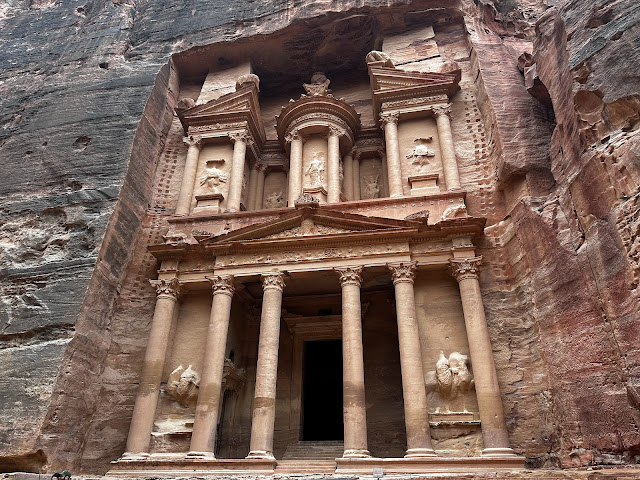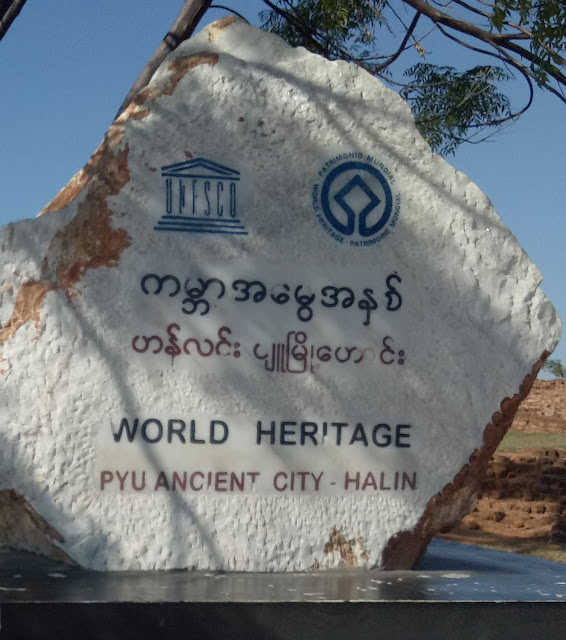The Great Sphinx of Giza
The Great Sphinx of Giza is a limestone statue of a reclining Sphinx (a mythical creature with the head of a human, and the body of a lion). It stands on the Giza Plateau on the west bank of the Nile in Giza, Egypt.
 |
| The Great Sphinx of Giza |
The Great Sphinx is the oldest known monumental sculpture in Egypt. Its’ original shape was cut from the bedrock and was subsequently restored with layers of limestone blocks. The nose of the monument was broken at some point during the 2nd Millennium CE. The most famous story is that Napoleon Bonaparte shot the nose of the Great Sphinx with a cannonball during the French invasion of Egypt. However, historical records suggest that the invasion took place between 1798 CE and 1801 CE, whereas there were paintings of the Great Sphinx with its broken nose from as far back as the 17th century CE. The other story is that in 1378 CE, a religious rebel by the name of Mohamed Sa'm al-Dahr was responsible for destroying the nose. Neither story has been confirmed and the nose could have simply been damaged by weather and corrosion over the millennia.
 |
| The nose of the Great Sphinx was broken at some point during the 2nd Millennium CE |
Based on the archeological evidence, mainstream archeologists suggest that the monument was constructed during the Old Kingdom of Egypt (the period from 2700 BCE to 2200 BCE), when Pharaoh Khafre was the ruler. Pharaoh Khafre is believed to have reigned over Egypt for a period of approximately 26 years between 2558 BCE and 2532 BCE. He is also widely regarded as the builder of the Second Pyramid at Giza.
 |
| A funerary statue of Pharaoh Khafre in diorite, in display at the Egyptian Museum in Cairo |
The Great Sphinx is positioned north of the lower end of the causeway of Pharaoh Khafre that connects his Pyramid and Valley Temple. Mainstream archeological evidence suggests that both the Great Sphinx and its’ temple which was never completed were constructed only after the construction of the Valley Temple. However, due to the lack of inscriptions connecting the Great Sphinx with Pharaoh Khafre, there have been alternative theories about the origin of the monument which became more public since the latter part of the 20th Century CE.
Two images of identical Sphinxes appear on the “Dream Stele of Thutmose IV” (also known as the Sphinx Stele) which is an epigraphic stele erected between the front paws of the Great Sphinx of Giza by the 18th dynasty Pharaoh Thutmose IV. As a result, speculations have come to light in recent years as to whether there were originally two Great Sphinxes on the Giza Plateau. However, this claim hasn’t been investigated in detail or substantiated and there may be a number of old constructions on the Giza Plateau which are yet to be fully excavated or evaluated.
Speculations as to whether the monument itself is of a Sphinx also exist. The most common alternative speculation is that the original structure would have been of an actual lion, and that the later rulers continuously changed the face of the structure in their own image.
Another alternative theory suggests that the original monument was of the jackal god Anubis (the god of funerary rites, protector of graves, and guide to the underworld, in ancient Egyptian religion), and that its face was reconstructed in the likeness of the Middle Kingdom pharaoh, Amenemhet II.
 |
| A frontal view of the Great Sphinx of Giza |
However, the mainstream archeologists and historians continue claim that the original monument was indeed a Sphinx and that the face of the monument appears to represent the Pharaoh Khafre who has been credited with its’ construction.
 |
| It is widely regarded that the the face of the Great Sphinx represents the Pharaoh Khafre |



Comments
Post a Comment